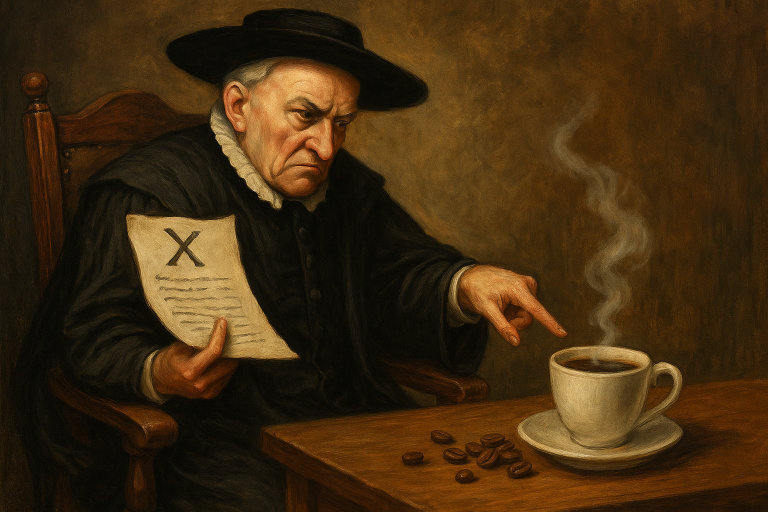
Coffee is a beverage with a rich aroma and even richer history. While its social and cultural impact is widely celebrated, its ties to colonialism, empire-building, and exploitation are often overlooked. Behind every cup brewed in Europe or the Americas during the colonial era was a global supply chain fueled by conquest, forced labor, and agricultural transformation.
In this article, we’ll dive into the complex relationship between coffee and colonialism—how the bean became a tool of empire, and how its legacy continues to shape economies, societies, and ethical discussions to this day.
In the 17th and 18th centuries, European powers were engaged in fierce competition to expand their territories, increase trade, and dominate global markets. As coffee gained popularity across Europe, demand skyrocketed. This created immense economic opportunity for colonial powers, who saw coffee not just as a luxury commodity—but as a strategic asset.
Coffee plantations became instruments of wealth and geopolitical power. The ability to control coffee production and supply meant dominance over an increasingly important market.
The Dutch East India Company (VOC) was among the first to break the Arab monopoly on coffee. In the late 1600s, Dutch traders smuggled coffee plants from Yemen and established plantations in Java, a Dutch colony in what is now Indonesia.
By the early 18th century, Java had become a leading global supplier of coffee. The Dutch used forced labor systems and controlled the coffee trade tightly, ensuring huge profits back in Amsterdam while exploiting local farmers.
This legacy gave rise to the term “Java” as a synonym for coffee—and also set the tone for how colonial powers would treat coffee agriculture: not as a shared good, but as a source of domination and profit.
In the early 18th century, France introduced coffee cultivation to its colonies in the Caribbean, especially Saint-Domingue (modern-day Haiti). The island soon became the world’s largest coffee producer, accounting for over 60% of global supply by the 1780s.
But this came at a devastating cost: the plantations were worked by hundreds of thousands of enslaved Africans under brutal conditions. Coffee was part of a triangular trade system in which human lives were commodified to fuel European wealth.
The profits from coffee and sugar in Saint-Domingue enriched France, but they also laid the foundation for one of the most significant events in history: the Haitian Revolution—a revolt by enslaved people that overthrew colonial rule and created the first Black republic in the Western Hemisphere.
While the Dutch and French dominated the early coffee trade, the Portuguese eventually built the most enduring empire around the bean. In the early 18th century, coffee plants were introduced to Brazil, and by the 19th century, Brazil had become the world’s largest coffee producer—a title it still holds today.
The scale of Brazilian coffee production was vast. Plantations called fazendas were worked by enslaved Africans until slavery was abolished in 1888. Even after abolition, harsh labor conditions persisted, now imposed on poor immigrants from Europe and Asia.
The Brazilian economy, urbanization, and infrastructure development in the 19th century were all heavily tied to coffee exports. Railways, ports, and cities like São Paulo grew because of the coffee trade.
Colonial powers didn’t just trade coffee—they studied and manipulated it. European botanists and agricultural scientists experimented with coffee cultivation across colonies to find optimal growing regions. This led to the global spread of Coffea arabica and later Coffea robusta.
Colonial botanical gardens, like those in Kew (England) and Pamplemousses (Mauritius), became centers of experimentation. These institutions served as both scientific hubs and tools of empire, helping colonizers better exploit their territories.
This scientific approach helped fuel coffee’s expansion to India, Ceylon (Sri Lanka), Vietnam, and East Africa, integrating even more regions into the colonial coffee economy.
Coffee farming under colonialism was rarely just or fair. Enslaved people, indentured laborers, and exploited peasants were at the heart of production. In many colonies, systems were put in place to control local populations, extract wealth, and suppress resistance.
In East Africa, for example, British colonial authorities used a system of forced cultivation in Kenya, while the Belgians imposed quotas on coffee production in the Congo.
Even in post-slavery systems, wages were often minimal, and workers had few rights. The legacy of these labor systems still affects coffee-producing regions today, where income inequality and rural poverty remain challenges.
The global coffee trade shaped international shipping routes, banking systems, and port infrastructure. Major port cities like Amsterdam, London, and Bordeaux flourished due to the wealth flowing in from coffee and other colonial goods.
In many cases, European economies became addicted to colonial imports, while colonies remained dependent on the export of raw goods—creating cycles of economic imbalance that persist into the present.
As coffee spread through colonial networks, it brought with it European customs, architectural styles, and social norms. Colonial coffeehouses emerged in cities like Hanoi, Algiers, and Goa, blending local traditions with imported European café culture.
In some regions, this created vibrant hybrids. In others, it reinforced cultural hierarchies and exclusion. Coffee became a marker of modernity—but only for those allowed to access it.
Even after formal colonialism ended, the coffee industry retained many of its exploitative patterns. Today, most coffee is grown in the Global South, while the highest profits are made in the Global North.
Countries like Ethiopia, Colombia, and Vietnam produce millions of tons of coffee annually, yet farmers often struggle with low prices, unstable markets, and limited infrastructure. Meanwhile, multinational corporations dominate branding, roasting, and retail—reaping the bulk of the economic benefits.
Efforts like Fair Trade, Direct Trade, and certifications aim to address these imbalances, but challenges remain.
Understanding coffee’s colonial history is essential for anyone who truly loves the drink. Every sip of coffee connects us to a vast and often painful legacy of power, resistance, and transformation.
Recognizing this history challenges us to think about where our coffee comes from, how it’s produced, and who benefits. It also calls us to support ethical sourcing, promote equity in the supply chain, and honor the people who make our favorite beverage possible.
Coffee is more than a morning ritual or café treat. It is a mirror of human ambition, cruelty, ingenuity, and hope. From empire-building to emancipation, from exploitation to empowerment, coffee tells the story of a world shaped by inequality—but also full of possibility.
To understand the role of coffee in colonialism is to see the world with more clarity—and to drink with deeper awareness.

Gabriel Rodrigues é especialista em finanças pessoais e escritor, com ampla experiência em economia, planejamento financeiro e gestão de recursos. Apaixonado por ajudar as pessoas a alcançarem sua saúde financeira, ele explora temas variados, desde investimentos até estratégias de poupança. Quando não está escrevendo, você pode encontrá-lo estudando novas tendências financeiras e oferecendo consultoria para quem busca melhorar sua relação com o dinheiro.